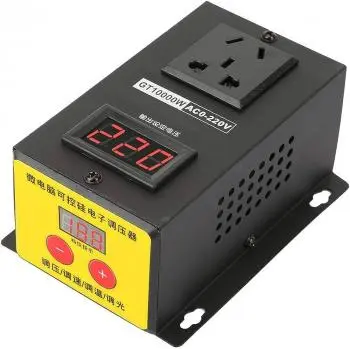
A voltage regulator is an electrical or electronic device used to keep the voltage level in an electrical circuit constant within certain predefined limits.
Its main function is to stabilize the electrical voltage, avoiding fluctuations that could damage sensitive electrical or electronic equipment.
Types of voltage regulators
There are several types of voltage regulators, and here are some of the most common:
Linear Voltage Regulators
Linear voltage regulators use components such as bipolar transistors or FETs (Field-Effect Transistors) to adjust the output voltage continuously. They control the output voltage by reducing the difference between the input voltage and the output voltage.
The main advantages are that they are simple, cheap and offer good voltage regulation in low power applications.
On the contrary, they are less energy efficient since they dissipate energy in the form of heat. This limits its use in high current and high power applications due to the heat generated.
Switched voltage regulators (Switching)
Switching voltage regulators use transistors that are turned on and off rapidly to control the output voltage. The switching cycle varies to keep the output voltage constant.
They are highly energy efficient, generate less heat and are suitable for high power applications.
They have the drawback that they can generate electrical noise (ripple) at the output and can be more complex to design and build than linear regulators.
Adjustable voltage regulators
These regulators allow the user to adjust the output voltage within a specific range by setting resistors or using a potentiometer.
They are useful when a variable output voltage is needed and are suitable for various applications.
Fixed Voltage Regulators
They have a preset output voltage value and cannot be adjusted. They are used when a constant and stable voltage is needed.
They are commonly found in applications where the output voltage must be constant, such as power supplies for electronic devices.
Programmable Switching Voltage Regulators
These devices allow users to configure and program the output voltage to their specific needs using digital interfaces or microcontroller controllers.
They are used in applications where it is necessary to adjust the output voltage dynamically, such as in industrial control and communications systems.
What is a voltage regulator used for?
Voltage regulators serve to maintain a constant and stable voltage level in an electrical or electronic circuit within certain predefined limits. Its main function is to ensure that connected electrical or electronic devices and equipment work reliably and safely, avoiding problems associated with voltage fluctuations.
Below is a more detailed description of its utility:
Equipment protection
Voltage regulators protect sensitive electronic devices from damage caused by power surges (when the voltage is too high) or brownouts (when the voltage is too low).
This is essential to prolong the useful life of expensive equipment such as computers, household appliances, communication systems, audio and video systems, among others.
Stability in power systems
In power grids, voltage regulators are used to keep voltage within an acceptable range, avoiding fluctuations that could affect the operation of industries, hospitals, and other critical places that require uninterrupted and stable power supply.
Energy efficiency
By keeping the voltage at a constant and proper level, voltage regulators can improve the energy efficiency of electrical systems, reducing energy losses and unnecessary consumption.
Reliable operation of sensitive equipment
Many electronic equipment, such as data servers, industrial control systems, and laboratory equipment, require constant voltage to function optimally. Voltage regulators ensure that these equipments operate without interruptions.
Reduction of electromagnetic interference
By providing a stable voltage, voltage regulators can reduce electrical noise and electromagnetic interference in communication systems and precision equipment.
Adaptation to variations in the electrical network
In areas with unstable power supplies, such as rural areas or blackout-prone regions, voltage regulators can help adapt input voltage to proper levels for equipment and devices, ensuring stable operation.